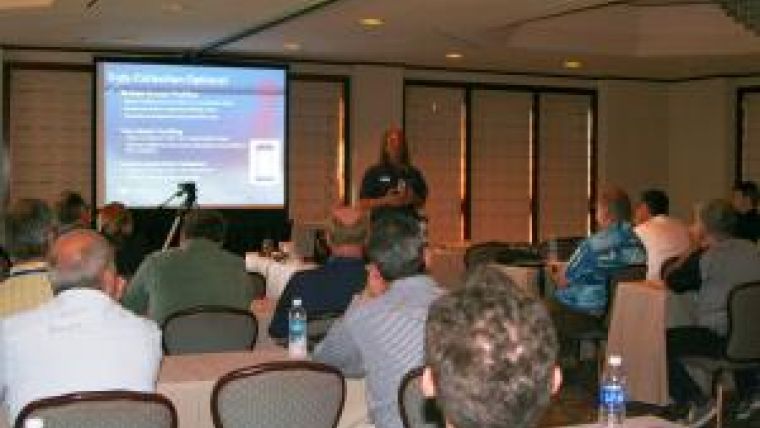Teledyne ADCP in Action
More than 200 ADCP (Acoustic Doppler Current Profiler) experts came together at the Teledyne ADCP in Action conference in San Diego. By bringing these experts together, Teledyne has established a venue where scientists, engineers, developers, etc. can share their thoughts on different ADCP solutions thereby encouraging the ADCP industry to meet each other, exchange thoughts and ideas, learn the ADCP implementations and above all the face behind the instrument.
The conference was divided into paper sessions by users and co-sponsors and afternoon workshop sessions on more in-depth explanations of the ADCP technology and how the different ADCP products can be used. The paper sessions generally covered the three different fields in which the ADCPs are used; navigation, measurement and water resources. Presentations ranging from ADCP usage in Antarctica during glacier ice surveys to ocean bouy monitoring applications were given. The WHOI also gave an interesting presentation on their monitoring activities during the Deep Water Horizon oil spill.
When looking at the three ADCP domain fields more diversification can be identified in ADCP usage. This has resulted in new types of ADCP solutions being developed this year, namely the Sentinel V ADCP and PAVS-150 long range DVL.
Although the navigation and measurement markets are still growing, the largest growth is expected in the water resource market. Especially due to new government regulations in this domain more users will benefit from ADCP solutions. The deepwater oil and gas industry is one of the industries driving the ADCP measurement solutions.
Outside, on Mission Bay, Teledyne Odom Hydrographic demonstrated the sound velocity sensor Digibar-S and the multi-beam ES3PT-M. Both Teledyne's TSS motion sensor and the Odom multi-beam are integrated into the ES3PT-M. Furthermore, VideoRay demonstrated the capabilities of the VideoRay ROV system in Mission Bay.
About 20 companies exhibited at the conference. An interesting development is the long endurance autonomous platforms. Liquid Robotics highlighted a solution with which oceanographic information can be collected making use of an autonomous vehicle that uses wave energy to create forward trust. Long journeys have already been made and this fall four wave gliders will sail to Hawaii and from there separately to Japan and Australia. The platform allows the installation of different sensors for collecting oceanographic information.
The ‘Around the World' cocktail hour brought the participants and exhibitors together and the AIA conference social programme ended with a nice dinner and a great performance by a local Californian band ‘Gary Seiler and the Coast Runners'.

Value staying current with hydrography?
Stay on the map with our expertly curated newsletters.
We provide educational insights, industry updates, and inspiring stories from the world of hydrography to help you learn, grow, and navigate your field with confidence. Don't miss out - subscribe today and ensure you're always informed, educated, and inspired by the latest in hydrographic technology and research.
Choose your newsletter(s)
























